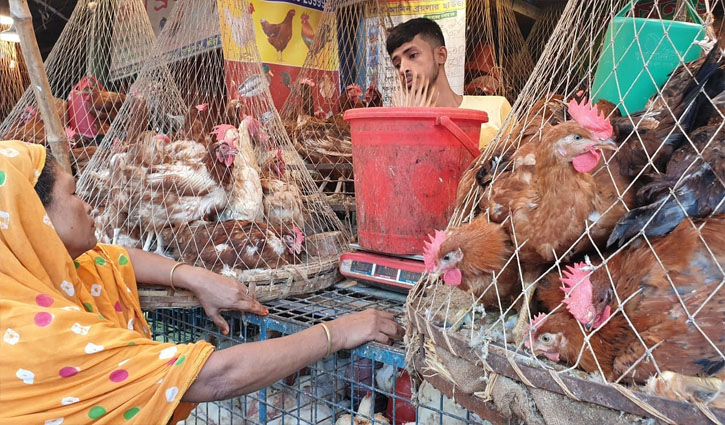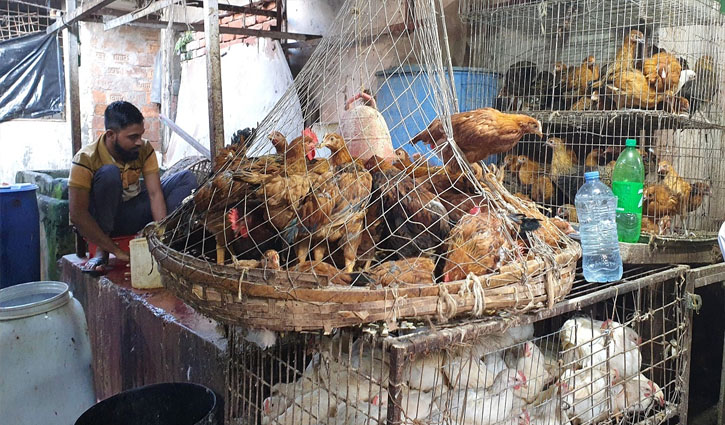New computer tool developed to track livestock disease threats
News Desk || risingbd.com

The first modelling framework for tracking viruses and bacteria as they travel through livestock ‘from farm to fork’ has been developed by a UK-led international team of One Health1 researchers.
It will allow decision-makers to better understand infectious disease threats associated with global food systems and more effectively target actions and interventions to minimise risk.
Known as EPINEST2 (EPIdemic Network Simulation in poultry Transportation systems), the innovative model was developed and tested by tracking the spread of avian influenza (‘bird flu’) viruses (AIVs) through networks of farms, markets and transport systems of broiler chickens in Bangladesh by the GCRF One Health Poultry Hub. Importantly, EPINEST’s modelling framework is the first tool that can be used to track different infectious disease threats through food systems, adjusting to the diverse ways in which livestock and other animals are raised (or hunted) and traded.
Zoonotic disease outbreaks the intensification of livestock farming and increasing complexity of food systems is known to present new opportunities for pathogens to emerge and spread. This is problematic because it undermines efforts to make food production sustainable. It also increases the risk that pathogens will ‘spill over’ to people and cause zoonotic (animal to human) disease outbreaks – and potentially another pandemic.

GCRF One Health Poultry Hub scientists developed EPINEST to realistically mimic how AIVs, bacteria causing food poisoning (Campylobacter and Salmonella), and bacteria carrying antimicrobial resistance (AMR) genes move through poultry production and distribution networks (PDNs).
Avian influenza is a constant global menace for poultry production, resulting in regular culls of kept birds with drastic animal welfare and livelihood impacts, as well as more recently causing devastation of wild bird populations. There is also the concern that AIVs have the potential to contribute to future human influenza epidemics and pandemics. Food poisoning caused by species of Campylobacter and Salmonella carried by poultry imposes a considerable global burden of human severe illness and can cause death.
Finally, AMR is described by the World Health Organization as a Top Ten global health threat and the inappropriate use of antibiotics in animal production is a known major contributor to its increased spread.
People, livestock, production spaces EPINEST is an agent-based modelling system, in which PDN connections between people, livestock and production spaces (nodes) are linked to provide a full characterisation of the underlying, dynamic food system.
From this empirical One Health data, computer simulations representing alternative scenarios are built and explored to predict the impact that variations in the system have on disease risks at different points in the network.
EPINEST was informed by field data from different disciplines. This included sizes of farms and their distance from each other, the length of time birds spent in different segments of the PDN, and the amount of trading and chicken-mixing that occurred during the journey from farm to fork.
This information was coupled directly with biological data generated by sampling chickens and sequencing pathogens to evaluate their disease potential.
The key innovation engendered by EPINEST is that it takes a systemic perspective on the spread of pathogens throughout the PDNs. Previous modelling efforts have focused on disease transmission within narrower settings, for example within a farm or a market.
Using EPINEST, the GCRF One Health Poultry Hub team modelled AIV dynamics and mapped the early spread of an emerging AIV strain across farms and through the rest of the PDN to markets.

Researchers quantified the increase that occurred in AIV infections during transport to market, and within the markets themselves.
By exploiting the ability of EPINEST to simulate multiple AIV variants at the same time, it is possible to generate knowledge of virus mixing patterns and document how specific trading practices contribute to increased mixing. This is believed to be of key importance because the mixing of distinct AIV variants in a given place can facilitate emergence of new – and potentially more dangerous – strains via the phenomenon of genome reassortment. The model is detailed in ‘EPINEST, an agent-based model to simulate epidemic dynamics in large-scale poultry production and distribution networks’, published in PLOS Computational Biology.
Interventions to mitigate disease risk The EPINEST framework allows policy and decision makers to better target and assess the effectiveness of the activities and interventions they recommend to reduce disease risk. For example, interventions classically implemented in other disease transmission models include culling of infected flocks or roll out of vaccination programmes. The model also allows exploration and evaluation of other potential interventions that could modify the overall configuration of the PDN – for example ‘rewiring’ the network of traders to reduce bird mixing or reducing the length of time that unsold birds are kept within a market environment. The GCRF One Health Poultry Hub is a 27-partner international research programme led by Royal Veterinary College, UK, and funded by UK Research and Innovation. Hub investigator Francesco Pinotti, of University of Oxford, said: “Poultry meat is important for improving nutrition in developing countries, however the intensification of livestock systems has come with great risks. EPINEST will help scientists and policymakers understand how poultry farming and trading shape pathogen spread, maintenance and evolution, and support decision-making to make poultry production safer and more sustainable. We hope and expect it will also be of use to scientists and decision makers concerned with other livestock species and disease systems.”
Press release
Dhaka/Mukul






































